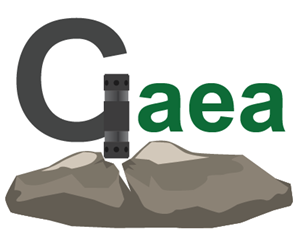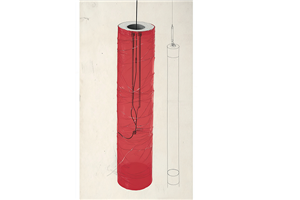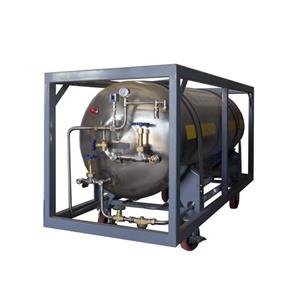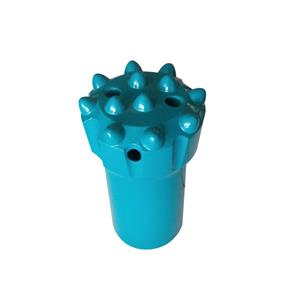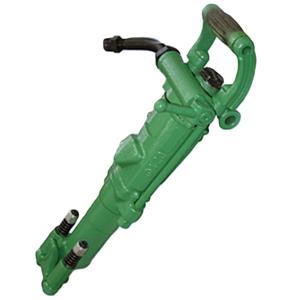Hur använder man DTH-hammare och borrkronor vetenskapligt för att uppnå effektiva borroperationer?
1. The speed of the DTH hammer during drilling
The speed of the DTH hammer, during the drilling process, the main function of the DTH hammer rotation is to make the drill bit alloy turn a certain angle to impact the rock next time. There are many descriptions of the speed of the DTH hammer in some domestic materials. But according to our experience, when impacting hard rock, it is more reasonable for the DTH hammer to rotate 1/3~1/2 for each impact of the DTH hammer. A large number of tests have also proved the influence of the speed of the DTH hammer on the rock drilling speed. Too fast or too slow will affect the drilling efficiency.
DTH hammer drilling speed formula: n=fd/πD
n------- DTH hammer speed (r/min)
f-------- DTH hammer impact frequency (times/min)
d-------- drill bit side tooth alloy diameter (mm)
π----- pi (3.14)
D-------- drill hole diameter (mm)
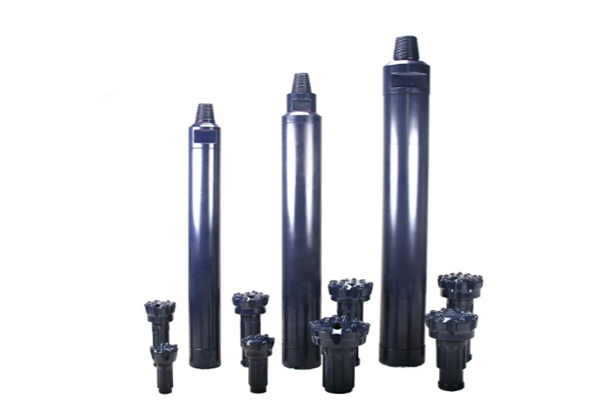
The speed of the DTH hammer is not only related to the hammer frequency, drill hole diameter, drill bit side tooth alloy diameter, but also has a great relationship with the rock properties.
The speed optimization suggestions for different rock types are as follows:
Soft rock (such as shale, mudstone, etc.): This type of rock has a low hardness and the speed can be appropriately increased. It is generally recommended to be 20-40r/min. A higher speed can speed up the crushing efficiency and avoid excessive extrusion of the drill bit in the soft rock, resulting in sticky drill.
Medium-hard rock (such as limestone, sandstone, etc.): The conventional speed is more suitable at 10-30r/min, which can ensure that the drill bit can effectively impact and crush the rock, and will not cause premature wear of the drill bit due to excessive speed.
Hard rock (such as granite, basalt, etc.): When impacting hard rock, the speed should not be too fast. It is recommended to be 5-15r/min. The slower speed allows the drill bit to fully utilize the impact energy and avoid excessive wear or even cracking of the alloy teeth due to high-speed rotation.
In drilling operations, the life and cost of the drill bit are of great concern to every user, so how to improve the service life of the drill bit needs to be explored. A reasonable speed selection can not only increase the drilling speed, but also increase the service life of the drill tool and reduce the cost of use. Since the drilling speed is related to many factors, whether it is pressure, rock hardness, down-the-hole hammer frequency, or the shape and size of the drill bit alloy teeth, we have to make corrections according to actual conditions when drilling rocks. For water well construction, the general speed of 10~30 r/min is more reasonable.
2. Axial pressure during drilling
The main purpose of the axial pressure (drilling pressure) of the down-the-hole hammer during drilling is to overcome the reaction force during impact and make the drill bit alloy in close contact with the rock at the bottom of the hole. It is related to the type of down-the-hole hammer, the hardness of the rock, and the pressure provided to the down-the-hole hammer by the air compressor. Each down-the-hole hammer has its own axial pressure range. As the diameter of the hole increases, the axial pressure increases; as the pressure increases, the axial pressure increases; as the hardness of the rock increases, the axial pressure increases. But generally, we recommend applying 6Kg~14.6Kg of axial pressure per millimeter of the hole diameter.
For example, when using an SPM360 down-the-hole hammer with an SPM360-152 drill bit to drill a 152mm diameter hole at a pressure lower than 1.7Mpa, the required axial pressure is 6Kg×152 = 912Kg. But when the rock is harder, we need to increase the axial pressure appropriately, which can be determined by observing the on-site use of the drilling tool.
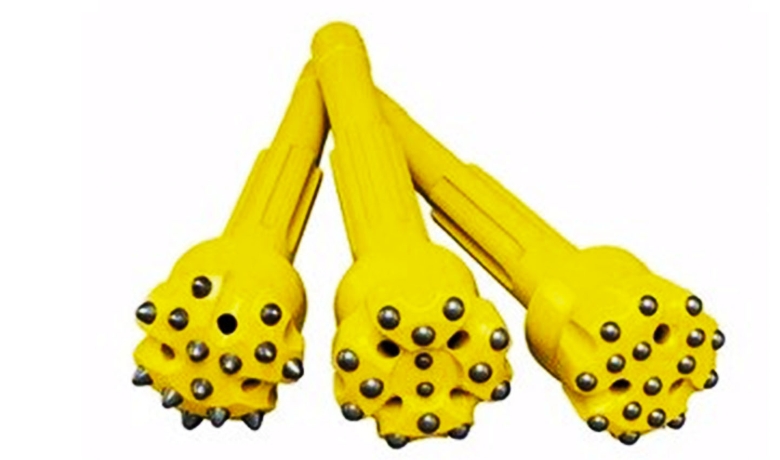
Optimization suggestions for axial pressure under different rock types:
Soft rock: The axial pressure should not be too large. It is recommended to apply 4-8Kg axial pressure per millimeter of drilling diameter. Excessive axial pressure can easily cause the drill bit to sink into soft rock and cause drill jam.
Medium-hard rock: According to conventional recommendations, 6-12Kg axial pressure is applied per millimeter of drilling diameter to effectively crush the rock.
Hard rock: The axial pressure needs to be appropriately increased. 8-14.6Kg axial pressure is applied per millimeter of drilling diameter to ensure that the drill bit can effectively impact the hard rock.
But when we carry out deep hole construction, we must consider the weight of the drilling tool, so the actual axial pressure we get should be:
Actual axial pressure = theoretical axial pressure - drill rod deadweight - down-the-hole hammer deadweight - drill bit deadweight
Experiments have shown that reasonable axial pressure can improve drilling efficiency. Blindly increasing axial pressure will not only fail to improve impact efficiency, but will also aggravate drill bit wear. Therefore, the reasonable selection of axial pressure must consider the following factors: the type of DTH hammer and the diameter of the hole; the physical and mechanical properties of the rock, mainly the hardness of the rock; the pressure and gas volume provided by the air compressor to the DTH hammer.
3. Torque during drilling
The torque required for the DTH hammer to drill holes is mainly provided by the drilling rig, which is mainly to enable the DTH hammer to achieve the rotation required during construction. Generally, the required rotation torque for each millimeter of the hole diameter is 1.06N・M, which is more reasonable, but considering other factors in the hole, we recommend that the torque for each millimeter (mm) of the hole diameter is about 2.7N・M. At the same time, as the depth of the hole increases, the torque also needs to increase; the rock hardness becomes harder, and the torque also needs to be increased. Therefore, when drilling, we must consider: the diameter of the hole; the depth of the hole; the rock formation.
▷ Torque optimization suggestions for different rock types:
Soft rock: The torque demand is relatively small, about 1.5-2.2N・M per millimeter of the hole diameter. A smaller torque can meet the drilling needs of soft rock and avoid the collapse of the hole due to excessive torque.
Medium-hard rock: The recommended torque per millimeter of drilling diameter is 2 - 2.5N・M to ensure that the hammer rotates stably in medium-hard rock.
Hard rock: The torque per millimeter of drilling diameter can be increased to 2.5 - 3N・M to enhance the crushing ability of hard rock.
The above analysis has concluded the dddhhhthree elementsdddhhh of down-the-hole hammer and drill bit during drilling, namely speed, axial pressure, and torque. Reasonable selection of the three elements of drilling during drilling can effectively improve drilling efficiency and reduce use costs.
